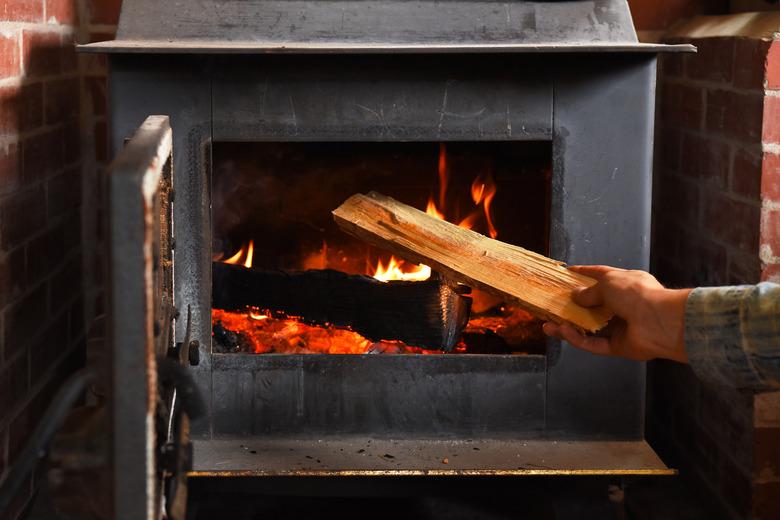How To Use A Buck Stove
If you want to heat your home efficiently and enjoy a cool, rustic aesthetic, a Buck stove could be the ideal solution for you. These wood-burning stoves offer a viable home heating alternative to burning oil and gasoline. According to Buck Stove, these wood-burning heating options solved a huge problem with home heating back in the 1970s, and they continue to be a popular option today.
But the key to getting the most out of your Buck stove is knowing how to properly use it. Mishandling your Buck stove could lead to it being less effective or even dangerous. If you're curious about whether a Buck Stove could be right for you, this is all the information you need.
Choosing a Buck Fireplace Insert
There are many options when it comes to purchasing a Buck stove. The older models from the 1970s are freestanding and with a double door, though they can also be installed as a fireplace insert. The more modern wood stoves tend to be designed as fireplace inserts and come in a much wider variety of sizes to suit any home. Whether you go for an older 1970s-style model or one of the newer options, there's no denying that Buck offers some of the best wood-burning stoves and fireplace inserts on the market.
Buck Wood Insert Basics
Buck wood inserts appeal to the basic human desire to create fire. A real wood fire feels relaxing and looks and smells beautiful. Buck stoves are equally aesthetically pleasing with a rustic, retro look to every model. Buck stoves, in particular, are easy to maintain and clean, and a perfect option for those who have never used a wood-burning heater before.
On top of this, Buck stoves are very efficient. This means they're good for the environment and good for your heating bills.
One major disadvantage of a Buck wood insert is that the initial investment is quite expensive. After the price of purchase and installation, though, a wood-burning stove can eventually save you money in the long run. It's also worth bearing in mind that not every home is suitable for a wood-burning stove. If you don't already have a chimney and a large enough hearth, installing a Buck stove can be extremely difficult. It's also required that you install a carbon monoxide detector alongside your stove. While it's clear a Buck wood insert isn't for everyone, if you think it'd be a worthwhile investment for your home, you likely won't regret it.
Using a Buck Stove
You should first open your stove door and locate the air control. This allows you to choose the temperature you require from your Buck stove. To build your fire, first place twists of newspaper around the bottom of your stove. Lay a few pieces of dry kindling on top. Ensure all of these pieces are touching so the fire will spread once you light it.
On top of your kindling, place a couple of smaller pieces of your firewood. You want to start with less firewood than you eventually intend to use, so as not to overload the fire during the lighting process.
Light the newspaper and immediately close the wood stove latch door. This will help the rest of the newspaper, then the kindling, ignite. Once you can see the first pieces of firewood have caught, you can open the door and load your stove with the rest of your firewood. Remember that you can turn the heat up or down at any point by using your air control — more air will mean more heat.
